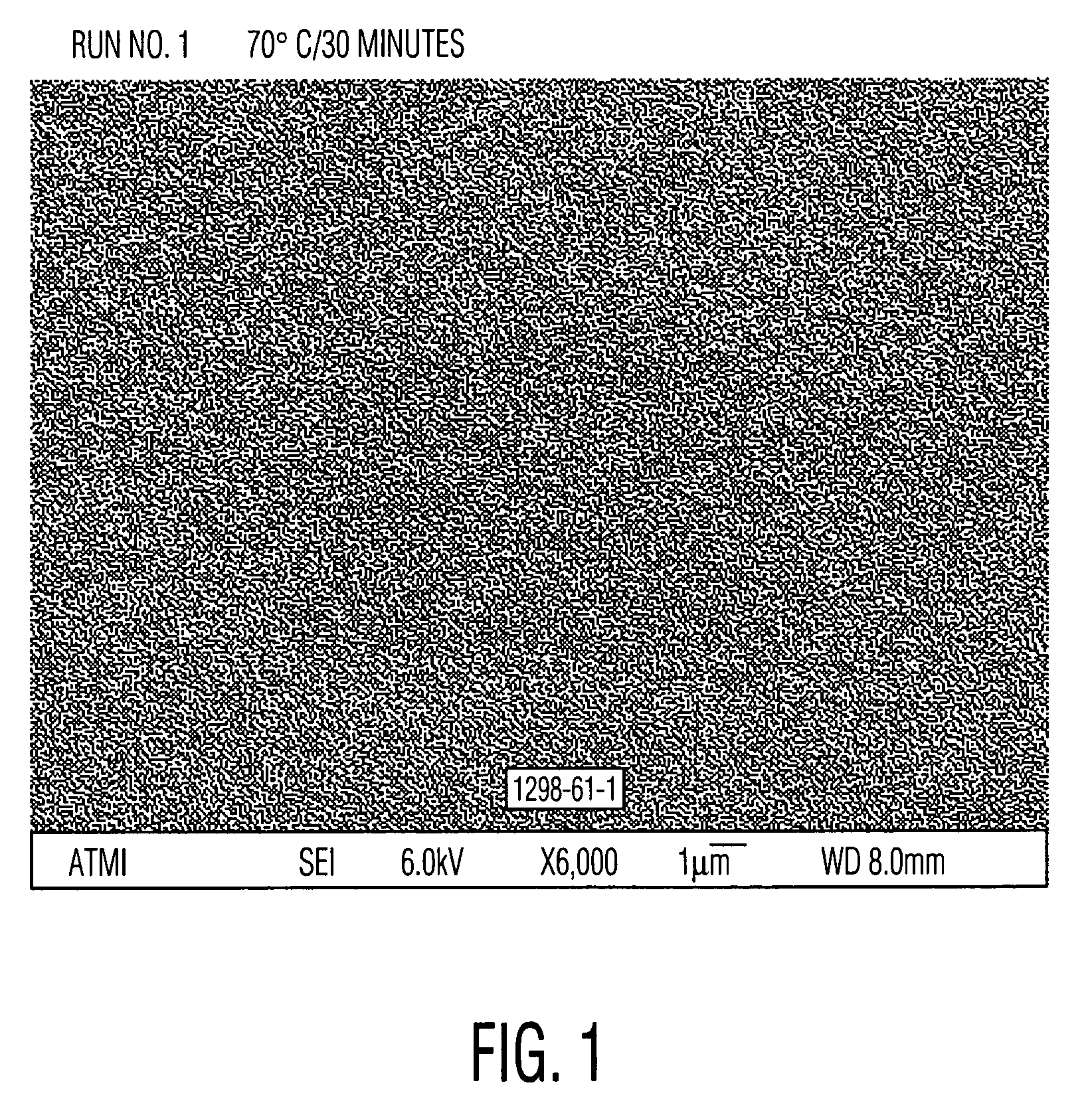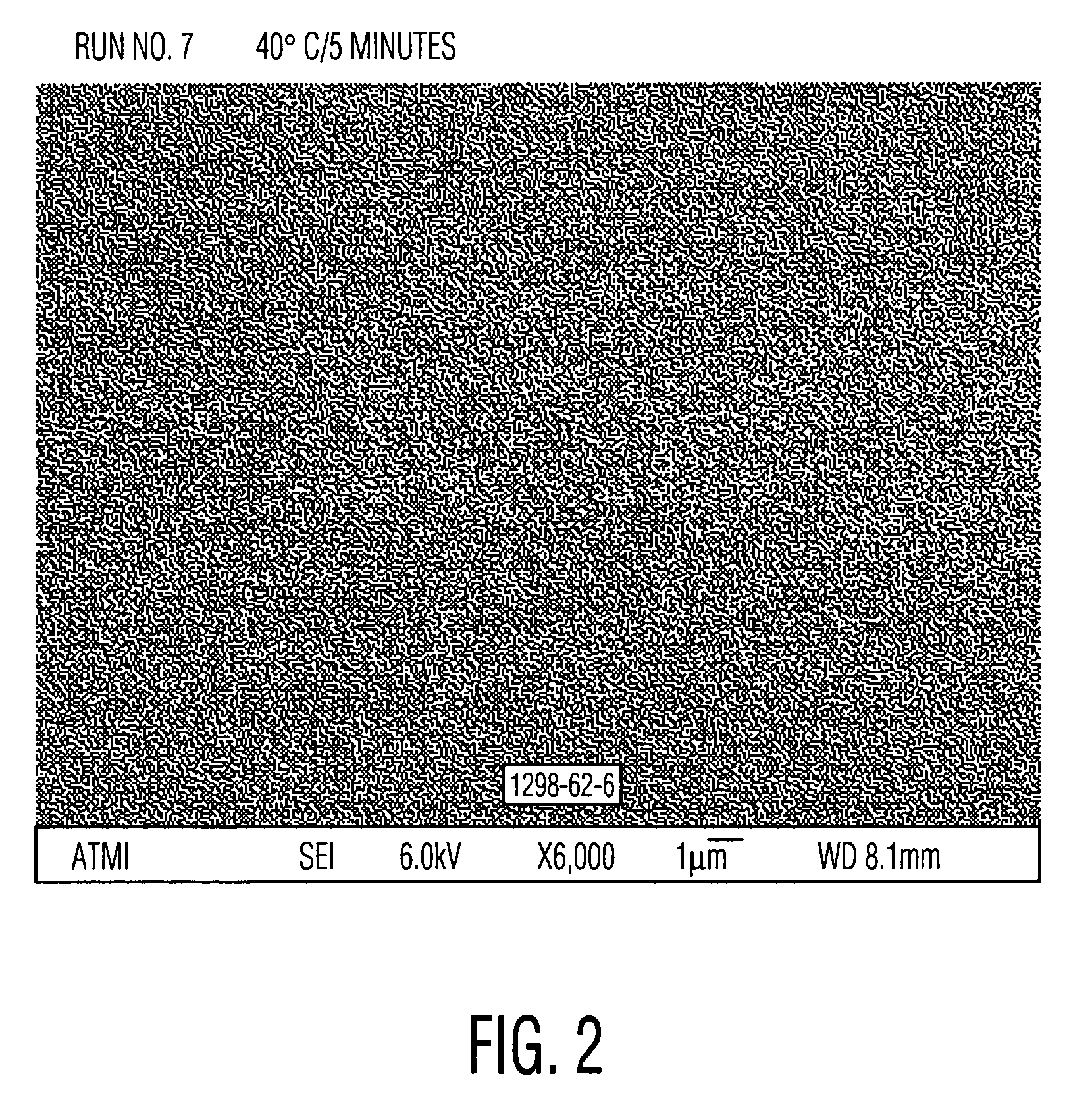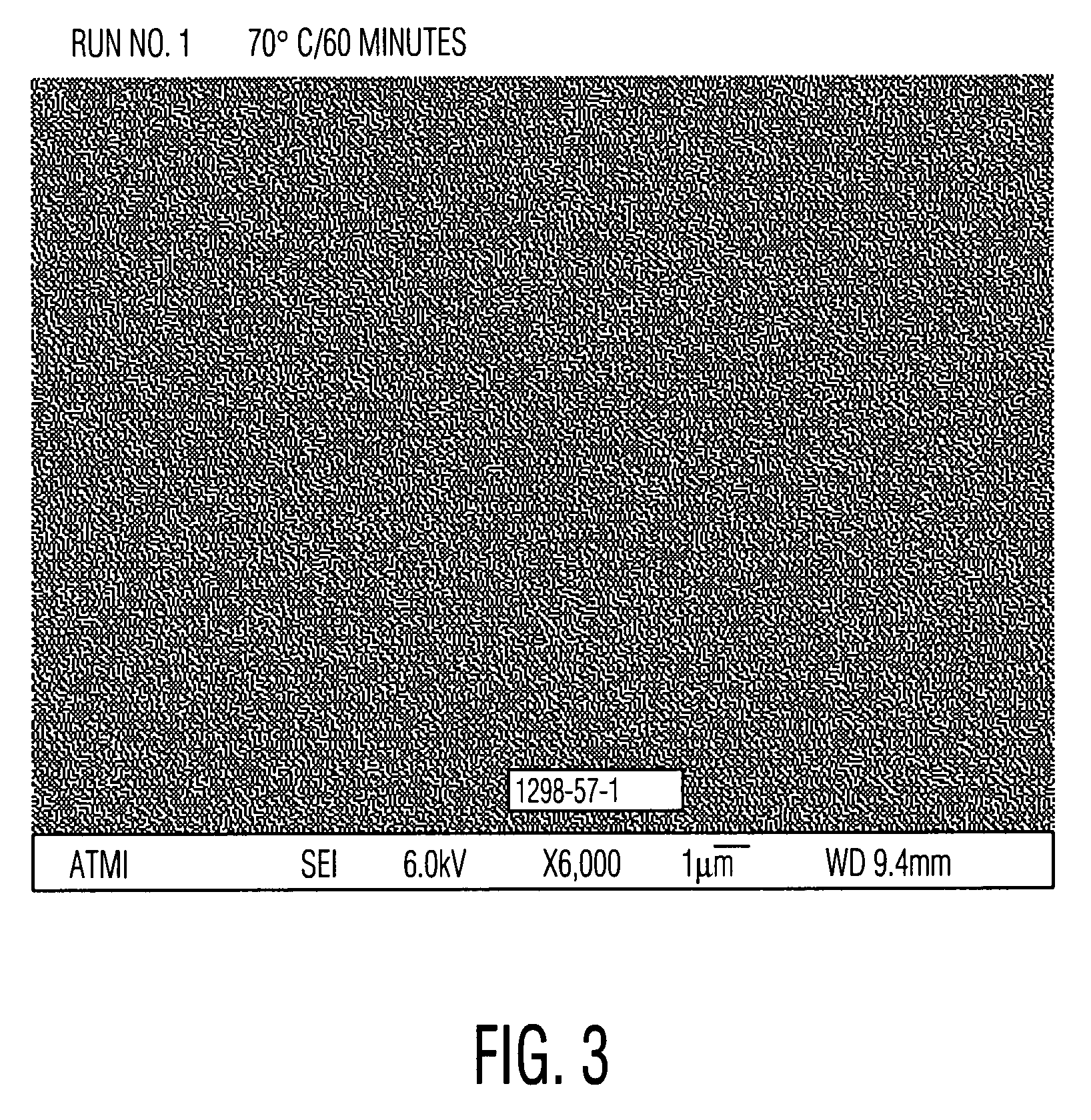Aqueous cleaner with low metal etch rate comprising alkanolamine and tetraalkylammonium hydroxide
a technology of tetraalkylammonium hydroxide and alkanolamine, which is applied in the direction of detergent compounding agents, inorganic non-surface active detergent compositions, instruments, etc., can solve the problems of contaminant layer, contaminant on the surface of semiconductor substrates, and combination of these two compounds that would not be considered by a worker skilled in the art looking for new metal cleaning compositions
- Summary
- Abstract
- Description
- Claims
- Application Information
AI Technical Summary
Benefits of technology
Problems solved by technology
Method used
Image
Examples
example 1
[0047]Cleaning solutions were evaluated for the tendency to corrode copper. One hundred milliliter aqueous solutions of alkanolamines with and without added quaternary ammonium hydroxides were prepared. Identical (4×0.02) inch copper wire samples were placed into these solutions for 10 minutes at 22° C., the wire was removed, and the solutions analyzed for copper (in parts per billion) using graphite furnace atomic absorption spectroscopy. The results, set forth in Table 1, clearly show the ability of quaternary ammonium hydroxides to prevent or moderate the copper corrosion (as measured by copper uptake in the cleaning solutions) that accompanies exposure to alkanolamines. Relative copper corrosion rate=(copper content of formulation with quaternary ammonium hydroxide)÷(copper content of formulation without quaternary ammonium hydroxide).
[0048]
TABLE 1Effect of Quaternary Ammonium Hydroxides on Alkanolamine CleanersComparative AlkanolamineAlkanolamine FormulationSolutions withoutCon...
example 2
[0049]Cleaning solutions were evaluated for the tendency to corrode copper. Aqueous solutions of alkanolamines with and without added quaternary ammonium hydroxides were prepared. Identical blanket copper on silicon wafer pieces were submersed in these stirred solutions for 10 minutes at 22° C. Four point probe measurements for sheet resistance were made on these pieces prior to and after treatment. Copper etch rates (in Angstroms per minute) for the solutions were calculated. The results, set forth in Table 2, clearly show the ability of quaternary ammonium hydroxides to prevent or moderate the copper corrosion (as measured by copper etch rate) that accompanies exposure to alkanolamines. Relative copper corrosion rate=(copper etch rate of formulation with quaternary ammonium hydroxide)÷(copper etch rate of formulation without quaternary ammonium hydroxide).
[0050]
TABLE 2Effect of Quaternary Ammonium Hydroxides on Alkanolamine CleanersComparative AlkanolamineAlkanolamine FormulationS...
example 3
[0051]Cleaning solutions were evaluated for the ability to remove particles from wafers patterned with copper into a low-K organosilicon dielectric. These received a final copper chemical mechanical polish (CMP) using a Hitachi low pH barrier slurry followed by drying without post-CMP cleaning. Aqueous solutions of alkanolamines with and without added quaternary ammonium hydroxides similar to Examples 1 and 2 were prepared and diluted 30:1 with water. These diluted solutions were used to clean pieces of the dirty wafers described above. A single wafer spray tool operating at 150 rpm at room temperature for 60 seconds was used. Particle counts of 20×20 micron squares were obtained from scanning electron microscope images using the Object Count routine of Sigma Scan Pro software. The results, set forth in Table 3, clearly show the ability of quaternary ammonium hydroxides to enhance the particle removing ability of the alkanolamine solutions. Relative particle count=(particle count of...
PUM
| Property | Measurement | Unit |
|---|---|---|
| temperature | aaaaa | aaaaa |
| temperatures | aaaaa | aaaaa |
| size | aaaaa | aaaaa |
Abstract
Description
Claims
Application Information
 Login to View More
Login to View More - R&D
- Intellectual Property
- Life Sciences
- Materials
- Tech Scout
- Unparalleled Data Quality
- Higher Quality Content
- 60% Fewer Hallucinations
Browse by: Latest US Patents, China's latest patents, Technical Efficacy Thesaurus, Application Domain, Technology Topic, Popular Technical Reports.
© 2025 PatSnap. All rights reserved.Legal|Privacy policy|Modern Slavery Act Transparency Statement|Sitemap|About US| Contact US: help@patsnap.com



